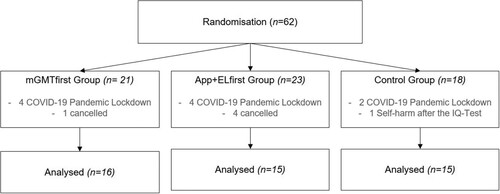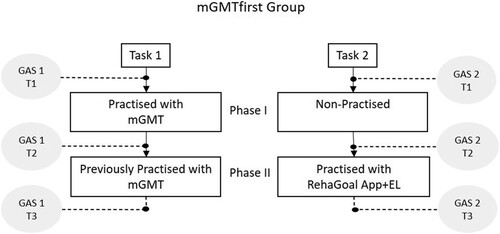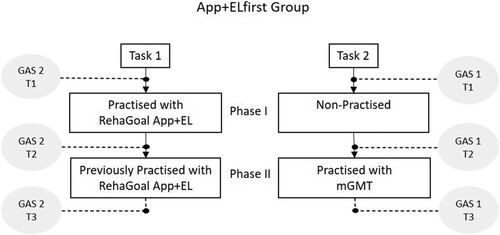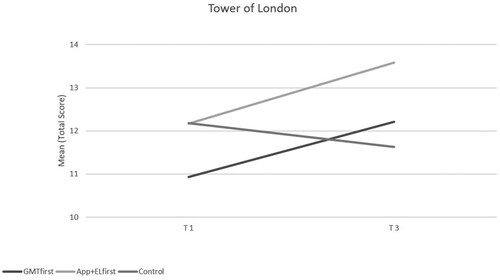Figures & data
Figure 1. Flow chart of the recruitment and randomization procedure.

Table 1. Demographic and clinical characteristics of participants.
Figure 2. Study design.

Figure 3. GAS measurements at T1, T2, and T3 for the mGMTfirst Group.

Figure 4. GAS measurements at T1, T2, and T3 for the App+ELfirst Group.

Table 2. Procedures for both intervention sessions.
Table 3. Secondary outcome measures.
Table 4. Pairwise comparison of performance in GAS.
Table 5. Mean GAS scores for each group at three measurement Ttme points (T1, T2, T3).
Figure 5. Comparison of Tower of London mean scores at T1 and T3 for the three groups.

Table 6. Mean neuropsychological test scores for the three groups.
